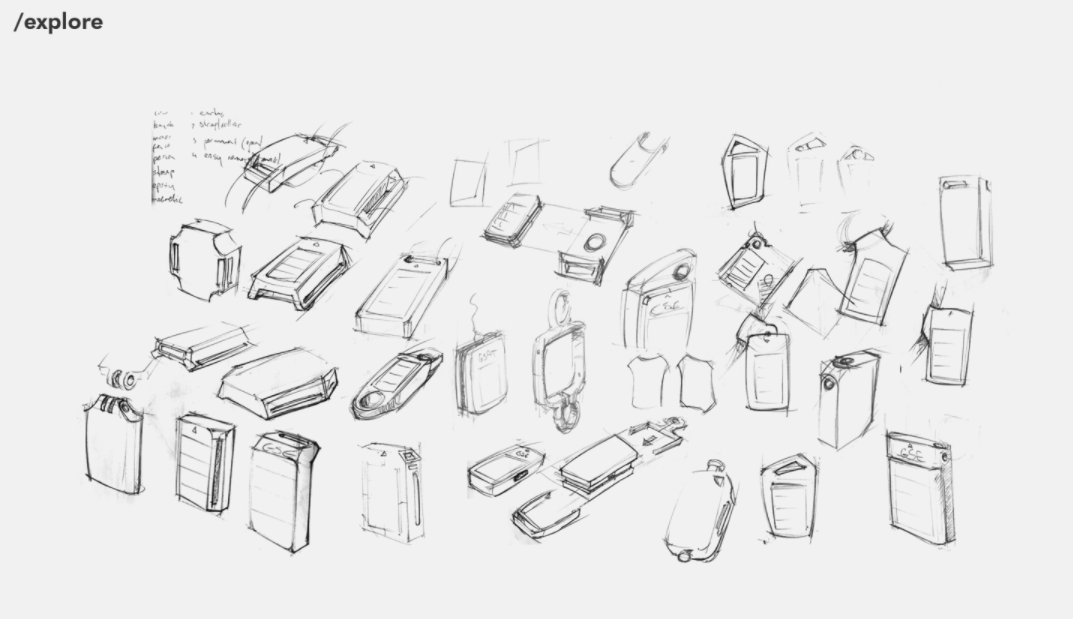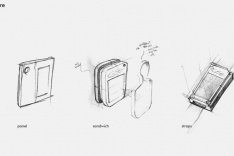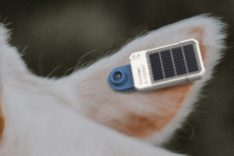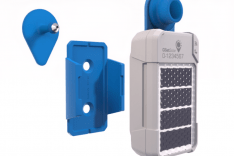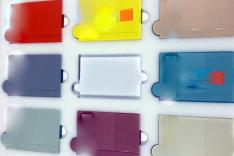Series Overview
This industrial design series is a great opportunity for us to show off the design processes we go through at GSE when we're creating new hardware products. This is the final piece of a six part series that points the spotlight at our new low-cost tracking terminal, the GSatSolar. If you have not read the other articles in this series, I suggest starting with the introduction piece by clicking here, because it has important information about our processes that will be referenced throughout this article, and links to the other articles in the series.
Part 6: Final Considerations
GSatSolar is going to fundamentally change the way certain markets view operational intelligence. The epitome of disruptive technology, the capabilities afforded by GSatSolar units to the ranching, adventure, and massive IoT markets alone will be the catalyst of a paradigm shift away from old practices, toward more insightful decisions, and toward a different understanding of investment in agricultural and remote monitoring technologies. The introduction of affordable remote tracking capabilities may even mean moving operations that are typically done in areas supported by cellular infrastructure to remote locations where more space is available for significantly lower costs.
Understanding how the GSatSolar was designed is the perfect way to map these possibilities to features and functionality of the device itself. While we set out with the primary goal of delivering a disruptive piece of technology to the cattle ranching industry, we also knew the implications of low-cost asset tracking across the spectrum of applications with lower-priced assets. In consideration of these potential applications, we made focused efforts to deliver a modular solution to all those seeking affordable remote asset tracking.
Connecting Design with Decisions
In each of the following parts of the series, we went into the granular detail of how each of the four major inflection points for the product were dictated by a Problem-Oriented Design framewrok that included general solution requirements and specific solution parameters. Adherence to these guiding principles in each of the major decisions related to the GSatSolar has resulted in a product designed with the problem and solution in mind, catered to the specific needs of the markets we intend to serve. Below is a recap of those deicisions and the principles on which they were based.
Part 2: Shape and Aesthetics
The Goal
The design parameters that were most influential to the look and feel of the GSatSolar were size, weight, and durability. Following those considerations was a focus on modularity so that other design decisions would have more options.
The Result
We arrived at the current form factor by emphasizing a lack of wasted space to conserve weight, accommodate the internal stack effectively, and provide an ideal fit for the unit's expected market requirements. The size and shape are also major components of the following two major product decisions, as the asymmetric shape and design features help guarantee proper use and modularity for intuitive application by end users.
Part 3: Designing for Proper Use
The Goal
The primary design pillar that dicated the goals of designing for proper use was that the final product ought to be intuitive. This means that we would do our best to design the product to require as little in the way of instructions as possible in order to deliver maximum performance.
The Result
Intuitiveness is a difficult metric to measure for most products, so including it in our requirements left only a handful of options available to us for certain product features. First and foremost, we must not introduce any new user experiences that were not related to the device functioning as designed. Second, we needed to make it as close to impossible to use the device incorrectly as possible. To achieve this, we made the front, top, bottom, and sides of the device in a way that suggests the proper orientation of a mounted unit, and we achieved this goal through the use of asymmetry in design.
Part 4: Mounting Options
The Goal
We knew that we needed to focus on the design pillar of providing an intuitive solution, which for us meant delivering a mounting mechanism that was familiar to our primary target market of cattle and livestock tracking. Knowing also that this device is perfect in other markets, we were determined to deliver a modular solution.
The Result
Modularity as a guiding principle allowed us to make multiple design decisions incredibly easily, as we knew that all we would need to provide on the unit itself was a means of affixing the modular parts. We settled on two different options- an asymmetrical set of strap bars, and grooves to accommodate clips, but also made sure there was a flat surface on the back of the unit large enough to accommodate fixed mounting like velcro strips or double-sided tape.
Part 5: Materials
The Goal
In our materials selection process, it was important to focus on the design pillars of durability, performance, and animal welfare, while also considering cost and weight.
The Result
We were able to prioritize certain factors above others in order to narrow our selection to a manageable number of options, and then worked to prioritize those that met the minimum criteria we established. The result was a proprietary plastic blend that is medical grade for animal welfare, ideal dielectric constant and loss tangent, and strong enough to support small parts and precision connections without breaking.
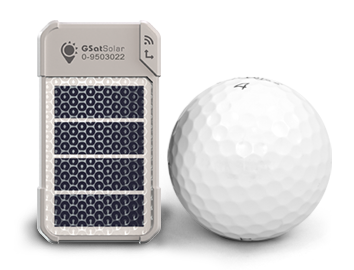
Understanding the Solution
The GSatSolar tracking unit is a revolutionary piece of a complete satellite tracking solution that includes a coverage network ideal for most remote land tracking needs and an industry best tracking platform to parse and leverage the data the unit collects and sends over that network. Really, the GSatSolar is a brand new way to affordably move insights and data from the most remote locations to a centralized operational intelligence portal where it can actually be used. This means that there is now a satellite tracking solution that is ideal for lower-cost assets that operate or exist for prolonged periods of time in remote locations away from human interaction.
Ranching operations have been in need of a low-cost and effective tracking solution for herd monitoring and theft prevention ever since the tools became available in other sectors. Prior to GSatSolar, there has not been a hardware product available to satisfy the specific needs of this market at a price that justifies the investment. The same is true for a number of adventure applications that focus on assets and not people. Lower-cost assets like Kayaks haven't had a viable and sensible tracking tool, leaving rental companies with little in the way of options for tracking their units. For the purposes of monitoring the location of assets valued under $3000, GSatSolar finally provides a cost-effective option to asset owners for theft prevention and loss recovery.
Leveraging the other solution value of GSatSolar is the plethora of commercial applications that come from the unit's ability to deliver operational value without the need for human interaction. This includes herd intelligence in livestock operations and location-based IoT applications in a number of other industries. GSatTrack as a component of these solutions allows asset managers to incorporate data from previously unconnected assets to an intelligence platform that can also pull data from a multitude other sources. Using the data mined by GSatSolar units, GSatTrack can deliver reports, location intelligence, and insight automation not previously available.
More Information
It has been a pleasure to produce this series for you, and to bring you behind the scenes of our design process. We encourage you to take the time to read the other articles in the series, and let us know if you'd like to see more article series like this in the future. For more information about the GSatSolar, we invite you to read more about specs, features, and applications on the product's official website, and sign up for the newsletter as well.


